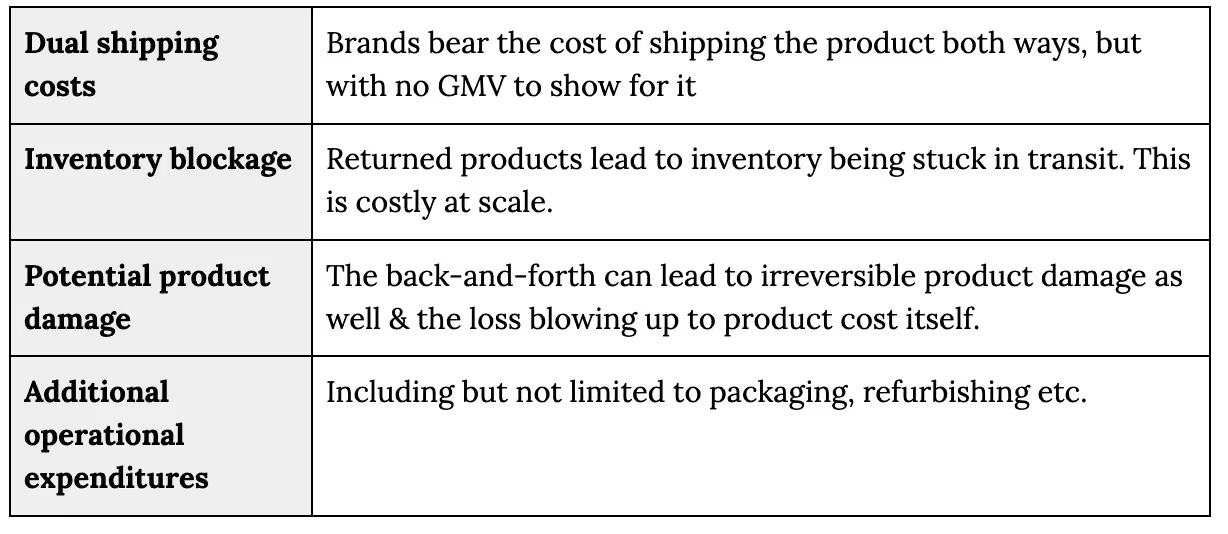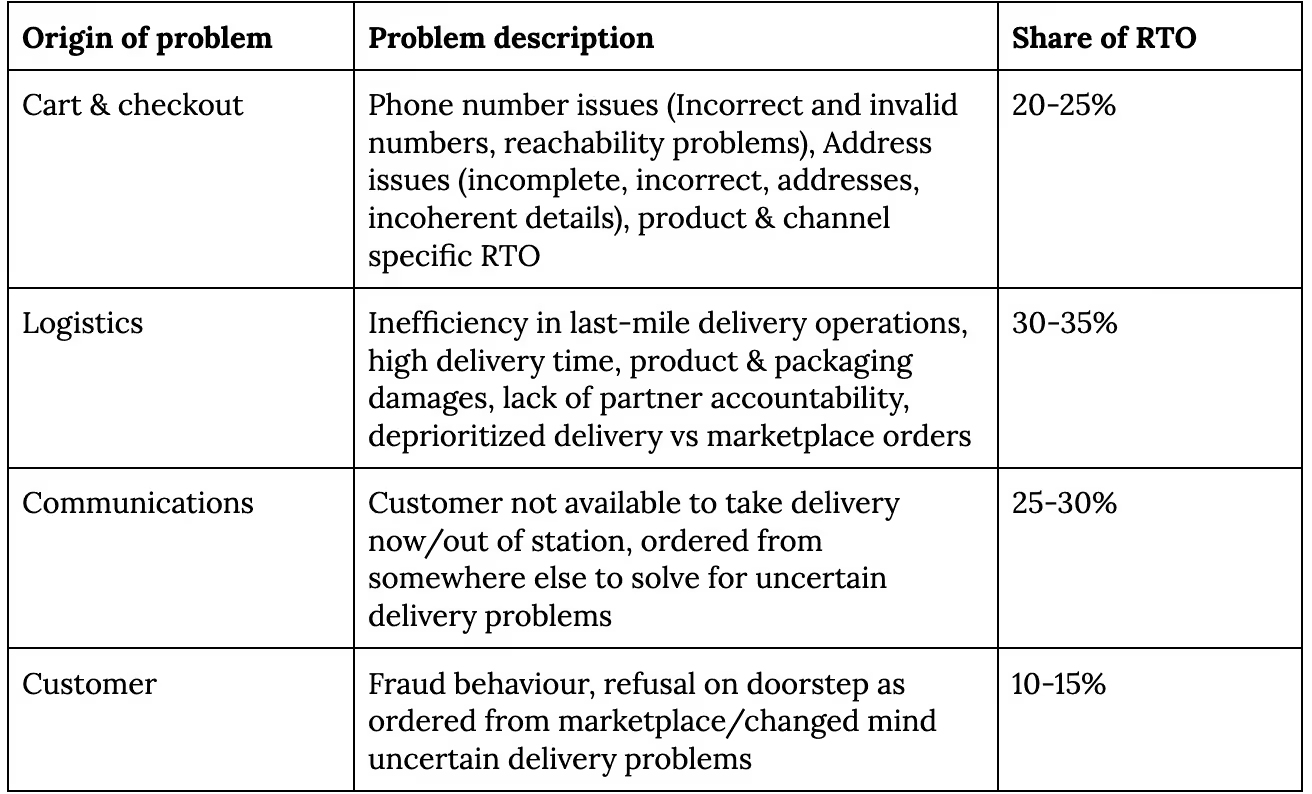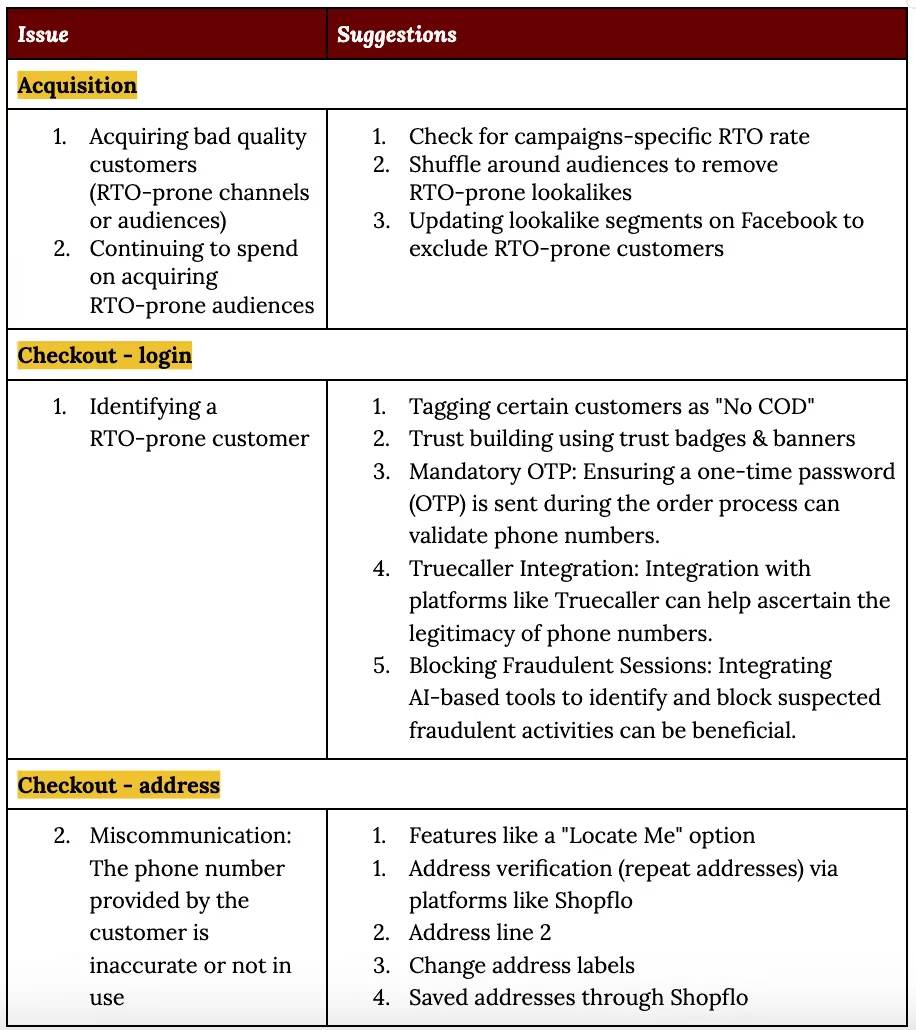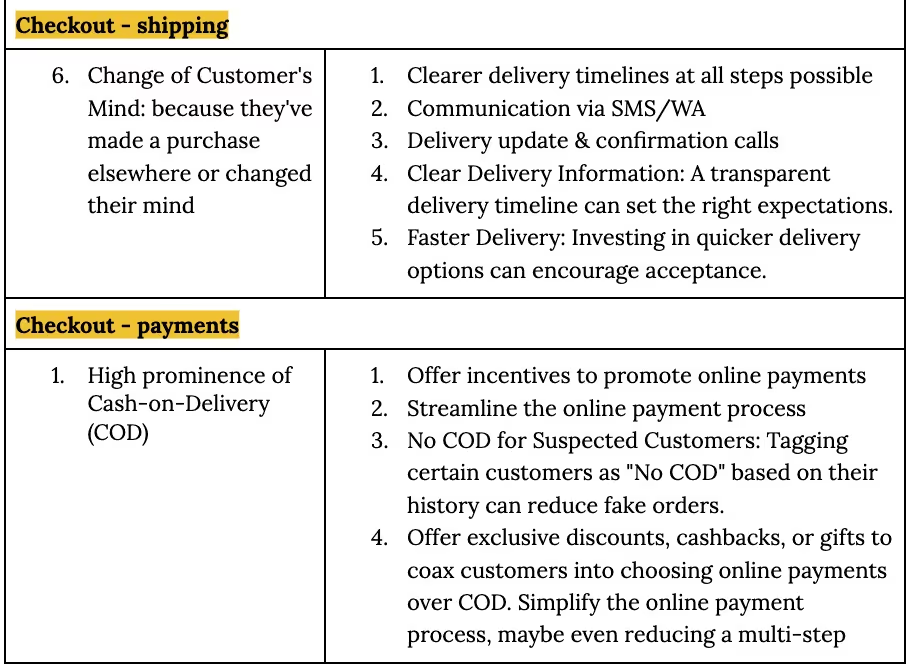Close Cookie Popup
Cookie Settings
By clicking “Accept All Cookies”, you agree to the storing of cookies on your device to enhance site navigation, analyze site usage and assist in our marketing efforts. More info
Return to Origin (RTO) happens when a placed order isn't delivered and has to be sent back to the warehouse. It's more than just a conversion and GMV hit; it introduces additional costs (typically adding up to ₹90-300 depending on the category & product type sold by the brand).
This cost head is comprised of:

While researching on how best we can solve the problem, we collated reasons and how much each of them affect the brands across categories.

Among these, intent issues is the larger part that needs to be addressed, accounting for 50-70% of all RTOs that happen for a brand. This number may vary for your brand depending on your category, audience demographics, your marketing, and AOV etc, but the trend should follow.
Since this is an omnipresent problem, we then set out to find what could then solve these issues - talking to people who have been in the industry for 10+ years in operations and logistics, figuring out if there is any data to systematically solve this problem.
Back of the envelope maths shows that any model trying to detect RTO-prone customers needs a >96% precision to bring the net realised loss to the business to zero if the business chooses to block COD for such customers. So we had to look elsewhere to find what businesses are using today to solve this problem.
The Indian audience is COD heavy by nature; there is a sense of safety in handing out cash compared to clicking on a payment link or putting your account details online - unless the brand is targeting a very premium segment, we can’t force them to pay online. Yet, brands have found their ways to tackle this problem. Here are a few anecdotes that we gathered, and we believe are scalable across brands:
“We perfected our system over the years - we realised quickly that logistics partners and the delivery persons know most about the deliverability and address correctness. Our operations team has set up a feedback loop with them to maintain a block list for customers for COD. When there are pincodes with higher fake orders, we block those pincodes from our serviceable pin code list.”
“We figured that most of our orders are coming from metro cities, covering 10-15% volume each in the top 3 cities. This volume was enough to test out 1 day delivery with our shipping partner. The extra costs of maintaining a warehouse in the city and offering 1 day delivery was far outnumbered by the RTO reduction we saw. When we scaled, we were able to negotiate better rates with them and this has brought our RTOs down from 16% to 3% in these cities. Now, we ship by 8 PM the same day if ordered before 11 AM, or next day if ordered later than the cutoff time.”
“For every COD order placed, we send users a message to confirm or cancel their order. It saves the effort of manual calling so reduces the operational costs. People do mention at order cancellation that they placed the order by mistake or oh shipping is too high. This confirmation flow via Whatsapp helps the customer reconsider their impulse decision and helps us scale with virtually no extra costs.”
“We moved away from COD as an option to pay on the website. Most of our COD cancellations were customers placing an order impulsively and then refusing to pay the amount at delivery. A tweak we added is placing a banner on checkout saying “for placing COD orders contact us on WhatsApp”. This layer of effort ensures only genuine customers place a COD order. So impulse purchase is mitigated. Counter-intuitive but this hasn’t affected our sales volume at all. Although the resources required to manage this have increased, the costs to benefit ratio makes it worth it.”
Another unconventional take that people have on how to improve the acquisition channels and campaigns, as high discounting strategies tend to push impulse purchases up. It is seen that brands that have a premium positioning have fewer RTOs as the audience is less prone to impulse-buying. Although this is hard to measure and we don’t have anything actionable that we could share here, but something for the marketing and operations team to sit and figure out together in the next all hands.
All in all, we figured that RTO is a complex issue and depends on too many different factors. Brands have to experiment with multiple of these to find what works for them. Here is a simple checklist you can use to check whether your team has tried some/all of them to reduce RTO. (If you have something we don’t know yet, please hit us up!)



Several of the above solutions can be integrated directly into the checkout process, like mandatory OTPs, UI validation, clearer delivery info, and intent verification. A seamless integration can be achieved by partnering with the right technology and delivery providers.